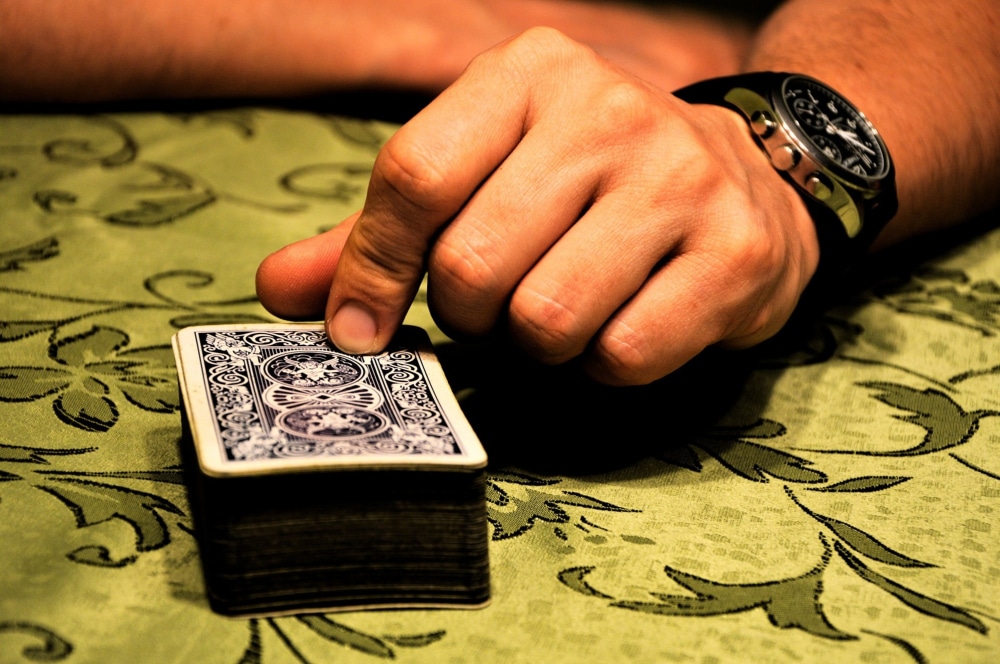The blackjack scene from Rain Man is unforgettable: Tom Cruise and Dustin Hoffman, playing Charlie and Raymond Babbitt, respectively, take a seat at the blackjack table, and before long the chips start piling up. We’re not saying your casino scene will have quite the same results, but reading this essential guide to the inner workings of blackjack will help you nail your strategy, and maybe even a hand or two! Here’s everything you ever needed to know about the game, plus a few essential strategies you don’t want to forget
Let the Games Begin
Like most card games, the origins of the blackjack card game are somewhat debated. Apparently, the French and the Spanish–and possibly even the Romans!–had all created versions of this game. In the end, it was the French version (its name in French meant “21”) that won out and made its way to the United States. In the 1930’s, it became a popular game at the rapidly growing Las Vegas casinos, which is when it became known by its current name, blackjack. The name owes itself to large payouts paid to aces and jacks.
How to Play
Ready to learn how to play blackjack card game? It’s simple in theory but can easily become a complex and exciting game. Essentially, blackjack is a comparing game. It’s usually played with several players and a dealer. The players compete against the dealer, but not against each other. Blackjack is played with a standard 52-card deck.
Your goal is to get to or closer to 21 (but not above 21) than the dealer. Kings, queens, and jacks all count as ten, the number cards count at their face value, and aces can be one or eleven, depending on what your card needs (a hand with an ace is called a soft hand).
There are three ways to win at blackjack. The first is to get a blackjack (a royal card or a ten and an ace) without the dealer getting a blackjack. The second is to reach a total score that doesn’t exceed 21 but is still higher than the dealer’s, and the third way to win is to allow the dealer to keeping drawing until her hand exceeds 21.
Let’s talk a little more about the mechanics of blackjack card game rules. One of the first things you’ll notice is that dealers don’t take verbal cues from the players. Hand signals only are used, and that’s done in all casino play thanks to security cameras trained on the table or watchers who are behind one-way glass. Casinos are both protecting against theft and eager for a record of activity in the event of disputes or dealer mistakes. Further, they want to be able to quickly identify players who are playing legally but winning too much.
The Hand Signals
The first thing that happens in the game is that the dealer deals two cards to each player. The players then have four options. They can hit, stand, double down, or split. If they hit, they take another card from the dealer. They indicate this by scraping cards against the table, tapping the table with a finger, or waving a hand towards the body.
If the player chooses to stand, that means they take no more cards. He or she will usually wave a hand horizontally over the cards in a “no” back and forth manner. Doubling down is indicated by placing the extra chips outside the betting box and pointing with one finger. Doubling down is where the player commits to standing after one more card. He or she will increase the bet at this time.
Finally, players can decide to split. If doing so, they’ll place extra chips outside the betting box and point with two fingers in an upside down v or peace sign. Splitting is a technique players use when their first two cards have the same value. Each card then becomes its own hand, has its own bet, and is played separately.
At the beginning of the game, the dealer deals two cards for himself: one face up and one face-down. Once each player has either stayed or busted (scored more than 21 on a hand), the dealer then flips over his second card and decides to hit or stay. At this point, scores are tallied. The players that lose against the dealer forfeit their bets and the players that win against the dealer win their bets.
Special Rules
If the dealer turns of an ace on the upcard, the dealer will offer a side bet called insurance. In this case, the players will wager on whether or not the dealer will make blackjack and either lose their bet if he doesn’t or win the wager if he does.
Blackjack payout depends on the casino. Usually, it’s 3:2 but sometimes it can be 6:5 or 1:1. A 3:2 payout means that a player wins three dollars for every two they wager or payout at one and a half times their investment.
Side Bets
Since blackjack is a game of chances, players often enjoy placing side bets in addition to insurance. Often tables require a player to place a bet on blackjack if they wish to make other side bets. Usually, the wager is placed in a space on the side of the table specifically designed for this.
Here are a few bets that can be made, depending on the table:
- Lucky lucky (the player’s hand and the dealer’s upcard amount to 19, 20, or 21)
- Perfect pairs (player’s first two cards make a pair)
- Bust it! (the first card the dealer draws will result in a bust)
- Match the dealer (one or two of the player’s cards are the same as the dealer’s)
- Royal match (player has royal cards)
- 21+3 (the player and dealer’s hand make a flush, a straight, or a three-of-a-kind
- Lucky ladies (player’s first hand equals twenty)
- In bet (dealer’s upcard is higher than one player’s hand and lower than the other player’s hand)
Blackjack Strategy
Blackjack is a game of probability, but it is a game which can be beaten, which gives it immense favor over other games. In 1966, Beat the Dealer was published by mathematics professor Edward Thorp. Thorp used his knowledge of programming and computers to develop probability models for blackjack, a fairly unpopular game at the time. After testing–and winning big–with his theories in Reno and Vegas, Thorp published his book. He has since been inducted into the Blackjack Hall of Fame, and his contributions to the game continue to this day.
From Thorp’s research came a group of rules about when to hit, stand, or split. Players can purchase small cards (called “the book”) online or in casino bookshops that have the basic strategy printed on them. Sticking to these cards decreases the house odds to .5%, which means you’ll have a greater chance of being successful by sticking to them.
Casinos count on people not sticking to their rules, and that’s where people start to lose huge sums of money. People who want to avoid memorize extensive charts to help them make the best decisions under pressure. These types of players are known as advantage players. While not illegal, they’re obviously unprofitable for casinos and are typically asked to leave once discovered.
The ultimate method of strategic play involves card counting. Again, card counting isn’t illegal (unless you’re using an electronic device) but it will get you kicked out of management catches on! Card counting is especially possible with single-deck games and games that aren’t shuffled till the end, which is why casinos don’t use these methods often.
Whenever a dealer finishes a round, he or she will expose the dealt cards. This gives you an opportunity to observe (or, count) the cards and make deductions about the cards that are left. The further into the game you get, the more accurate you’ll be in your predictions about what cards are left.
You can use this information when placing bets. If you know that there are a large number of aces and tens left in the deck, for example, you know your chances of hitting blackjack are higher and you can bet accordingly. Likewise, if you know there are a lot of unplayed tens, you might choose to double down since your chance of getting a good hand is higher.
There are elaborate charts and systems to aid people in card counting, which can, in fact, boost a player’s edge to as high as 2% over the house. It must be done correctly, however, which means it takes a special kind of person: somebody dedicated, willing to work hard to learn extensive possibilities, and disciplined enough to not let the excitement steer him off course.
Now that you how to play blackjack card game, as well as essential blackjack strategy, let the games begin!

